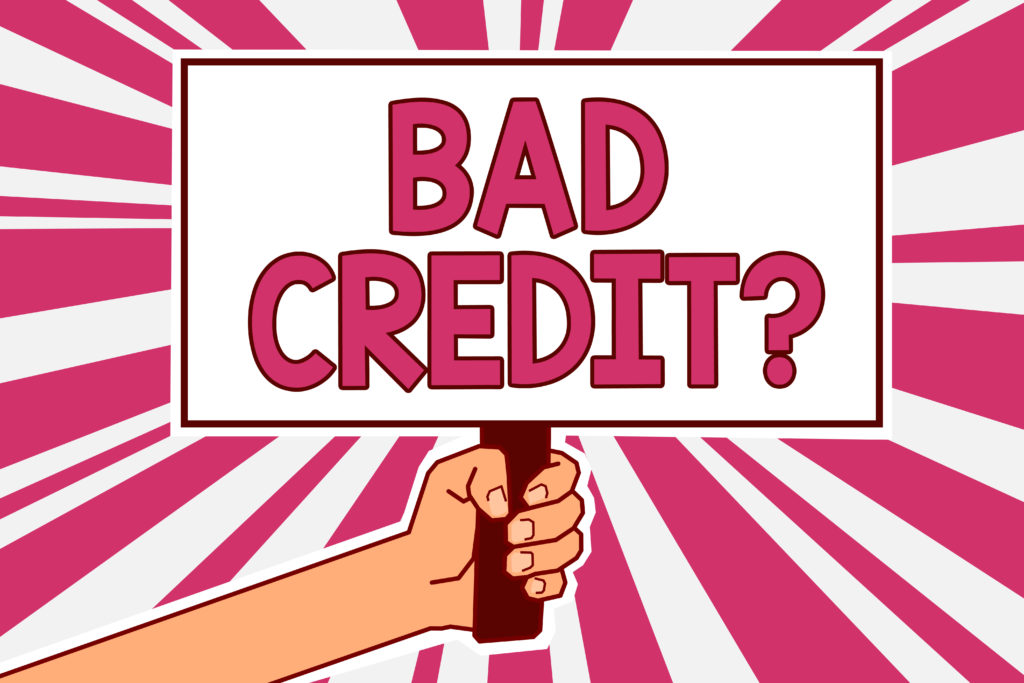Credit Cards for People With Bad Credit

If you’ve ever had credit problems, then you’ve probably received offers for credit cards for people with bad credit. These offers range from legitimate to questionable to outright scams. How can you tell the difference?
The answer is to read the fine print, usually to be found in a document called “Terms and Conditions”. To show you the difference between “the good, the bad, and the ugly” in the low-end credit card market, let’s take a look at the fine print associated with such offers.
Legal but Questionable
We’ll start with one of the more popular low-limit “starter” cards available today for people with bad credit. These are actual terms published by a major company at the time this article was written. The card comes with a Visa logo on it and looks like a regular credit card, so you can use it as an extra piece of identification when you’re booking a hotel room, renting a car, and so on.
In the “Terms and Conditions” document, the first thing we see is the annual percentage rate (APR), listed as 19.5%. That’s not a particularly attractive rate, but it’s not as high as a lot of other cards. A little farther down, we see that the APR for cash advances is higher, 25.5%, which is normal since there is greater risk involved to the company.
Where it really gets interesting is the section that lists the fees associated with the card. In this example, there is an annual fee of $150! There is also a $29 fee to open the account, as well as a monthly “maintenance” fee of $6.50. Whew! That’s a lot of fees. But wait! It gets better.
Toward the bottom of the document, buried in the fine print, we see something called “Available Credit Limitations.” In 8-point typeface (very tough to read on a computer screen or printed page), you are informed that your generous initial credit limit will be a whopping $300. On your very first statement, you will be billed for the $150 annual fee, plus the $29 setup fee. The $6.50 monthly fees will start appearing after you make your first purchase on the card.
Let’s take a closer look at the math here. It will cost you $179 up front, plus $78 per year, to obtain $300 worth of credit. Your total cost for the first year is $257, assuming you pay off the balance each month and don’t incur any regular interest charges.
Sound like a good deal? Does it make any sense at all to pay $257 to obtain $300 worth of credit? That’s 85.6% in effective interest! If you keep a running balance of $300 on the card, and just make the minimum payments every month, your effective interest rate will be 105.2% for the first year, and 95.5% for subsequent years. That’s some pretty expensive credit! This credit card offer, while legal, still counts as a total rip-off.
Effectively a Scam
As bad as the above sounds, it still only qualifies as “questionable” rather than being a full-on scam. There are much worse offers floating around out there. I’ve even seen some “deals” where the fees are so stiff you start out above the credit limit before receiving the card in the mail! Just because you have bad credit does not mean you should accept such awful offers.
In the scam category I’d also include cards where you are forced to pay an advance fee prior to receiving the “guaranteed” credit card, which of course never arrives. There are also “catalog cards,” where you supposedly build credit by purchasing items through a card tied to one particular company and their catalog of goods. The problem is that the catalogs usually consist of grossly overpriced junk.
Do Your Own Research
So what constitutes a good credit card offer for someone who’s experienced serious credit problems and wants to take action toward rebuilding his or her credit? At the risk of annoying the big credit card marketing companies who target the sub-prime credit market (consumers with bad credit histories), my advice is to completely avoid any offer that comes to you unsolicited. Instead, do the research on your own.
Shop and compare before you apply. A simple internet search for sub-prime credit card offers or bad credit credit cards will show you a lot of different results. Once you find an offer you think looks good, do a little research on the company offering the card to make sure it is legit. Also remember, the APR is only one aspect of your decision, and not necessarily the most important. What you want to look at very carefully are the annual fees, setup fees, and monthly fees.
It’s important to realize that you may not be able to obtain an unsecured credit card when you’re just starting to rebuild your bad credit. Instead of paying $257 to obtain $300 in credit, you’d be far better off placing $250 as a deposit toward a good SECURED credit card from a reputable major bank. In this real-world example, the annual fee is only $29, the APR is 19.99%, and there are no setup fees or monthly maintenance charges.
Your $250 deposit will net you $250 worth of credit (less the $29 annual fee), and you’ll build positive credit history just as quickly as with the ridiculously expensive offer discussed above. Plus that original $250 deposit is still YOUR money. After you’ve been granted unsecured credit again, and you’ve paid off any outstanding balance on the secured card, you can get your deposit back.
One final tip: If you have the opportunity to join a credit union, you should consider checking out their offers for low-limit unsecured and secured credit cards. Credit unions frequently offer much better terms than regular commercial banks. Through credit unions, you can often find credit cards with no annual fees, lower interest rates, and more flexibility. Credit unions are great institutions for people looking to rebuild bad credit.
Be sure, however, to confirm that the credit union reports account activity to the credit bureaus. Otherwise, your positive payment history on the new credit card won’t lift your credit score. And remember, no matter what card offer you’re considering, be sure to read that fine print!




